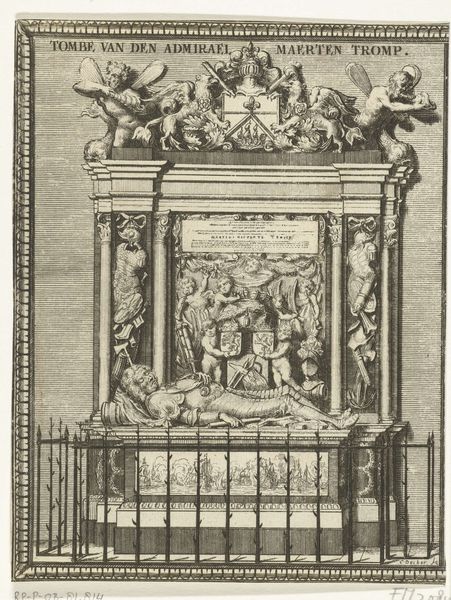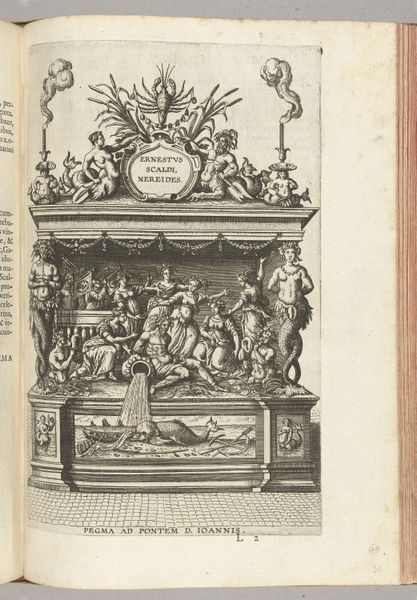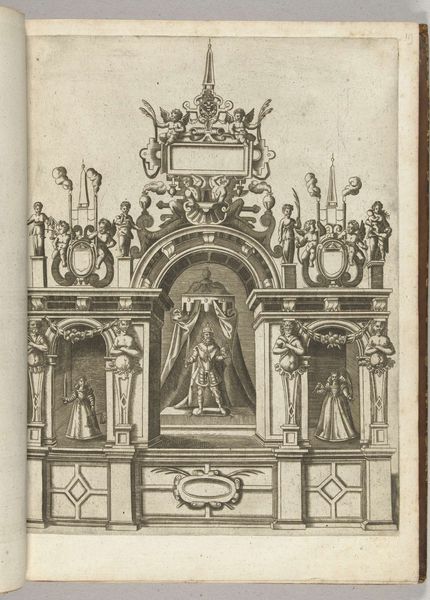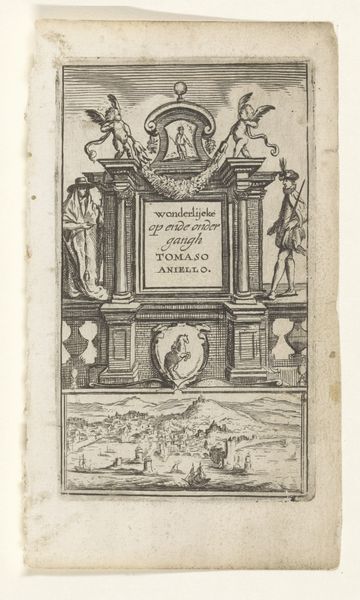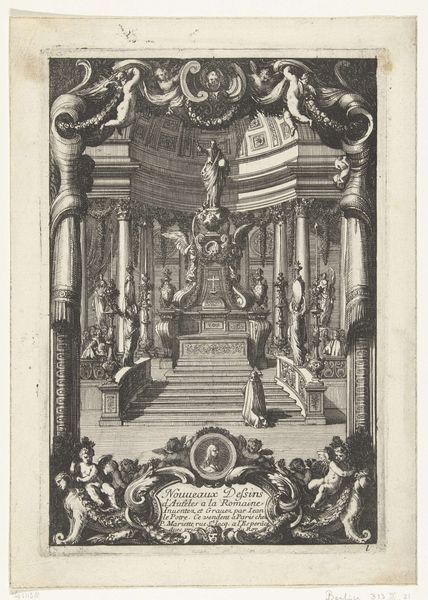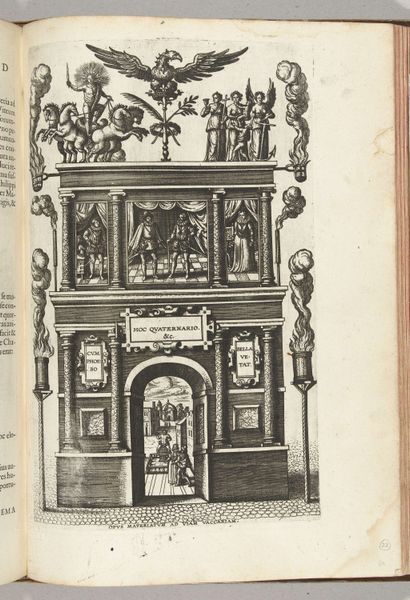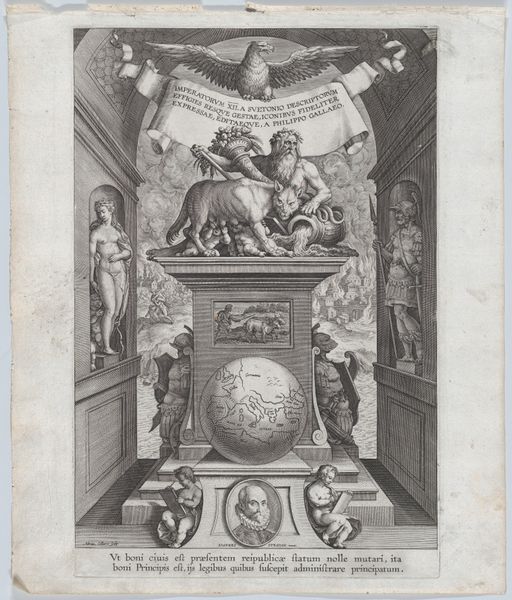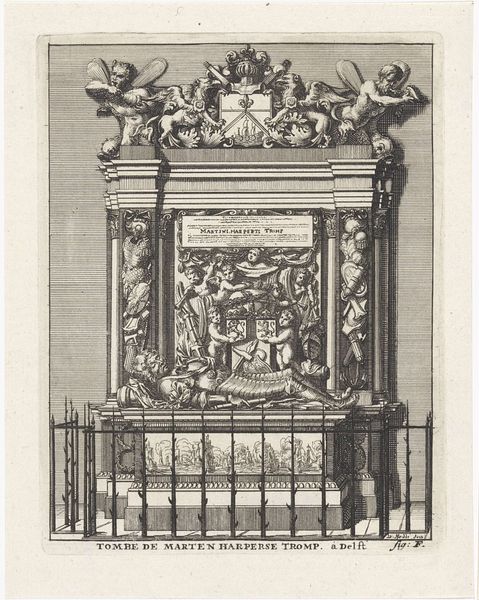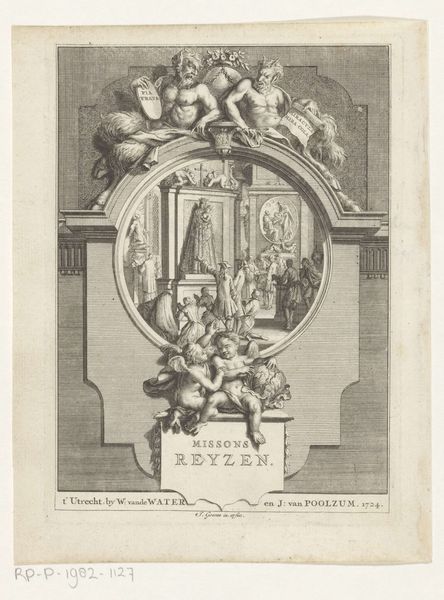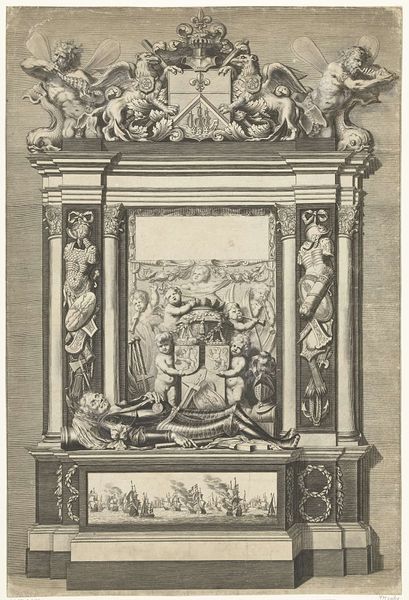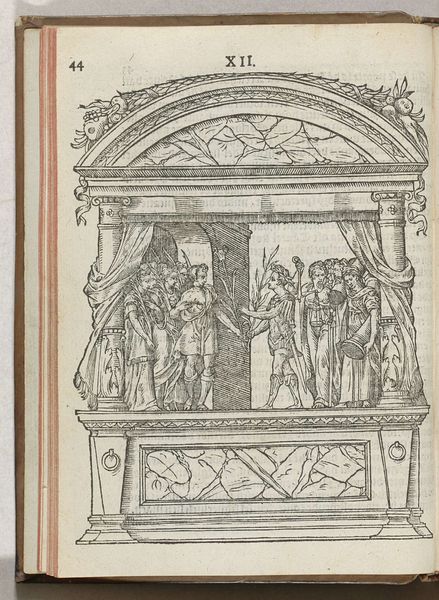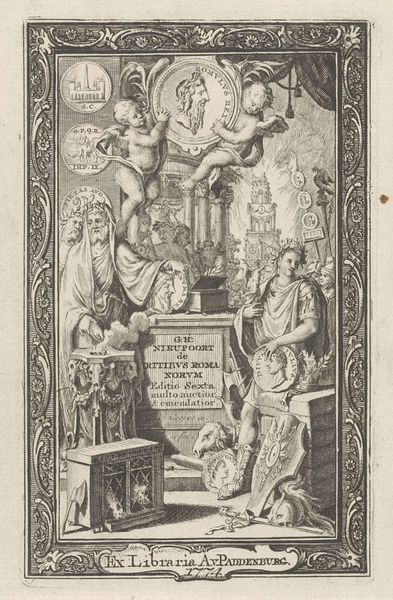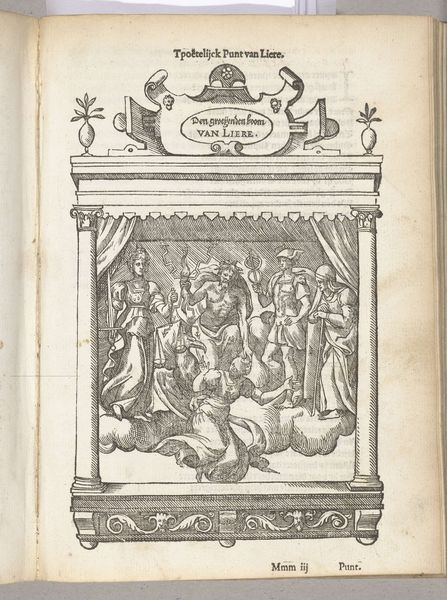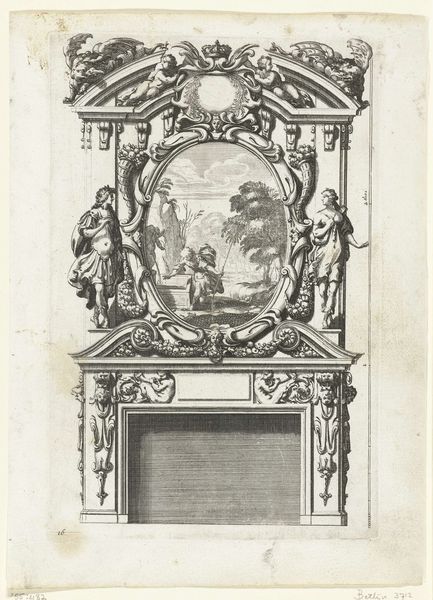
print, engraving
#
allegory
# print
#
perspective
#
figuration
#
11_renaissance
#
line
#
history-painting
#
northern-renaissance
#
engraving
Dimensions: height 325 mm, width 202 mm
Copyright: Rijks Museum: Open Domain
Pieter van der Borcht created this print, Toneel ter ere van de Strategie, in 1594, using the technique of engraving. The incised lines of this print offer a fascinating insight into the relationship between reproductive media and the social context in which it was produced. Consider the labor involved in making an engraving. The artist would have used a tool called a burin to manually cut lines into a metal plate, requiring skill and precision. The density and direction of these lines create tonal variations, defining form and texture. Prints such as this played a crucial role in disseminating ideas and images widely during the early modern period. They were relatively inexpensive to produce, compared to paintings or sculptures, which made them accessible to a broad audience. The print medium facilitated the spread of knowledge, propaganda, and artistic styles across geographical boundaries. So, while on first glance this may appear to be a simple image, keep in mind that its material form and mode of production were deeply intertwined with the social, economic, and political forces of the time.
Comments
No comments
Be the first to comment and join the conversation on the ultimate creative platform.
